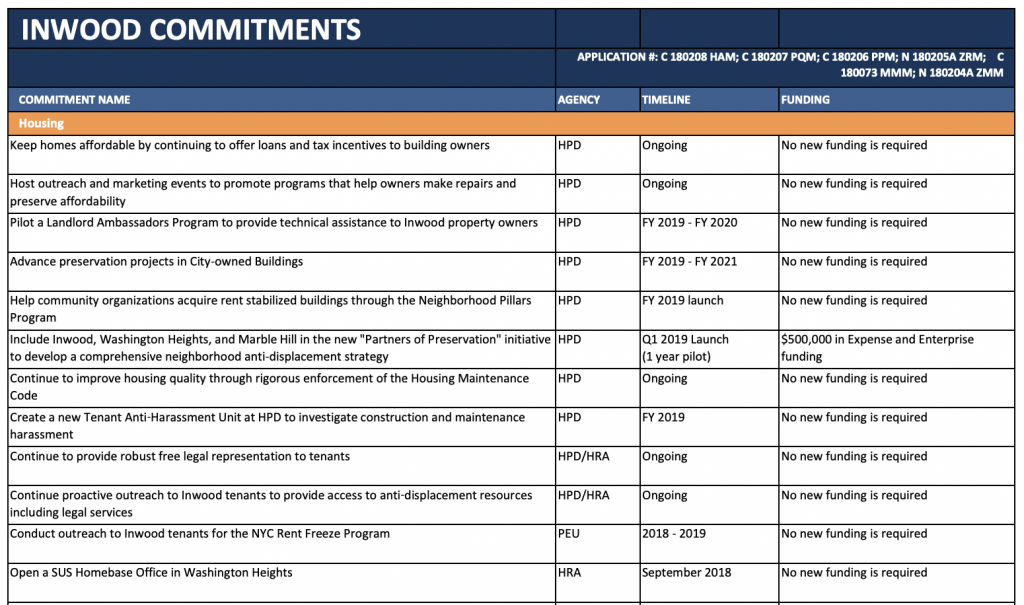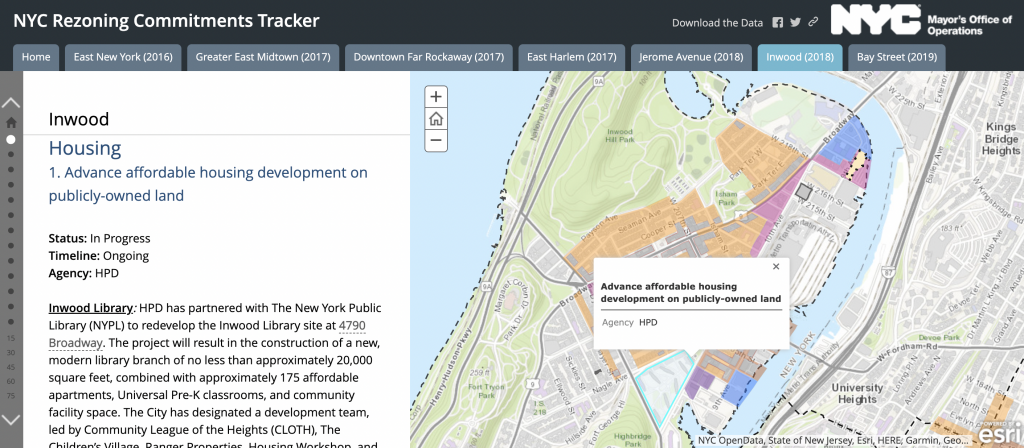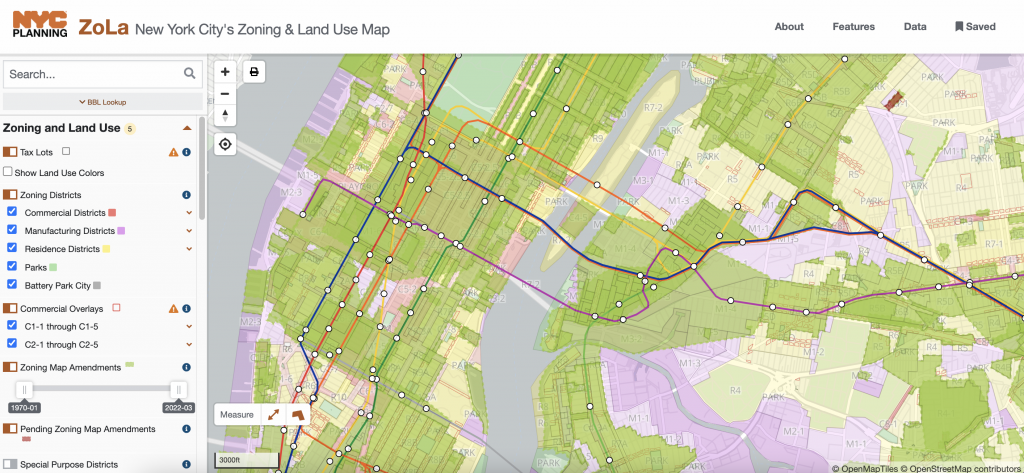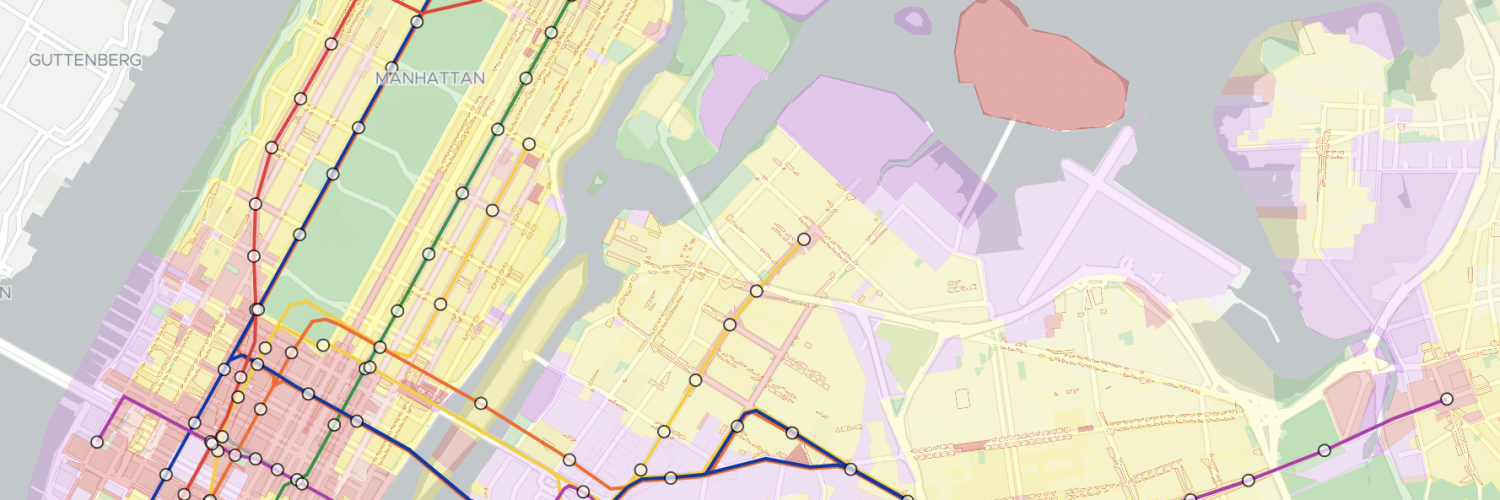There’s so much news out there about different New York City neighborhoods being rezoned. Most people may understand that this means, very simply put, that more buildings will get constructed in said neighborhood. But what does it really mean? How does an area qualify for rezoning? What changes does this trigger? What are the pros and cons? Ahead, Marketrproof breaks down the ins and outs of the rezoning process in NYC and why it’s so important to the past, present, and future of both our built environment and social conditions.
What is rezoning?
Let’s start with zoning, which is a law that dictates how land in a given district may be used. This includes things like building size (massing and height) and use (for example, hotels are only permitted in certain districts). According to the NYC Department of City Planning (DCP), which oversees zoning, the Zoning Resolution “establishes an orderly pattern of development across neighborhoods and the city.”
There are three types of zoning districts:
- Residential Districts (R): Ranging from detached single-family homes ( R1 Districts) to residential skyscrapers (R10 Districts)
- Commercial Districts (C): Business activities ranging from neighborhood retail and services (C1 Districts) to gas stations and car repair (C8 Districts)
- Manufacturing Districts (M): Industrial and commercial activities
There are also Special Purpose Districts, which address unique conditions within certain neighborhoods. Examples of this are the Special Hudson Yards District created in 2005, which allowed for higher density development and new parks, and the Special Clinton District created in 1974, which protects the neighborhood’s low-scale character.
So then rezoning is an amendment to the Zoning Resolution. This allows room for flexibility within the law so that the city may adapt to changing needs. There are two types of amendments. A zoning text amendment involves “introducing new text or amending existing text in the Zoning Resolution.” This is a simpler process. A zoning map amendment is more complicated and more commonly discussed in the news. This involves “changing the zoning designation on the zoning map(s), which could affect one lot, many blocks, or sometimes an entire neighborhood.”
Check out Marketproof New Development for the most information anywhere on NYC condos.
What is the process for rezoning?
When something is built under current zoning regulations, it’s considered “as-of-right.” Plans that require the review and approval of the City Planning Commission (CPC), Board of Standards and Appeals (BSA), or the City Council are considered discretionary actions, which rezonings fall under.
Anyone from an individual private property owner to the city itself can propose a rezoning. For the purpose of this article, we’ll focus on zoning map amendments, which must go through a public review process called the Uniform Land Use Review Procedure (ULURP) that has a mandated time frame in which the review must take place.


The ULURP steps are as follows:
- Filing of Application: By the applicant
- Certification: DCP certifies that the application is complete.
- Community Board Review: The Community Board must hold a public hearing on the application and submit a written recommendation on the amendment to the City Planning Commission (CPC), the applicant, and the Borough President.
- Borough President Review: The Borough President must submit a written recommendation on the amendment to the CPC.
- CPC Review: The CPC must hold a public hearing on the application and then approve, approve with modifications, or disapprove the application.
- City Council Review: The City Council reviews all zoning map changes approved by CPC and must hold a public hearing on the application and then approve, approve with modifications, or disapprove the application.
All new rezonings must follow the Mandatory Inclusionary Housing (MIH) program, which was a zoning text amendment passed under the de Blasio administration. Though there are many complexities to the program, its basic structure requires all buildings constructed under rezonings to designate a percentage of units as permanently affordable.
All rezonings must also undergo a City Environmental Quality Review (CEQR), which ensures that a project adheres to the State Environmental Quality Act (SEQRA). The findings are then compiled into an Environmental Impact Statement, which is used to inform decisions during the ULURP process.
The environmental review looks at things like socioeconomic conditions, open space, construction impacts, noise, and traffic and parking.
If and when a rezoning is approved, the allowances such as bulk and height often come in exchange for public-good inclusions that could fall under the following policy domain categories:
- Housing: This includes requirements for affordable housing, based on the percentage of below-market units or certain income brackets (low income vs. median income, for example)
- Open Space: Large developments may be required to allot a certain amount of lot area to public open space
- Community Resources: This may include providing funding to local arts organizations or building new libraries.
- Transportation and Infrastructure: The exchange may require a developer to finance the renovation of an adjacent subway station or improvements to nearby streets
- Economic and Workforce Development: This may include connecting residents to training programs or creating new schools.
Why do rezonings get contentious?
Most major rezonings that we hear about in the news are considered upzonings, meaning an area was rezoned to allow for a greater Floor Area Ratio (FAR), which is the ratio of a building’s total square footage to the lot it’s built upon. When FAR is increased, taller, bulkier buildings are permitted.
So what’s the issue? Let’s take the recent 56-block Soho/Noho rezoning, as an example. It was approved by the City Council in late 2021, but local residents and community groups are now suing the city over it. They feel that the plan does not mandate enough affordable housing and will allow for the demolition of existing rent-controlled and rent-stabilized apartments (and will therefore displace long-time residents that include many artists and the elderly), to be replaced with out-of-scale luxury condo towers and luxury retailers. They also claim that the plan did not undergo the appropriate environmental reviews.
The city, however, says it’s an important step to bring more permanently affordable housing, and thereby more diverse residents, to a wealthy neighborhood. They also feel the plan will create more jobs in the area.
City resources for rezoning information
NYC Department of City Planning Initiatives
The Department of City Planning has a portal for zoning initiatives broken down by borough. This includes projects currently in review, those recently approved, and archived projects.
NYC Rezoning Commitments Tracker
The city is legally responsible for publishing all capital and programmatic commitments associated with neighborhood-scale rezoning.

For each rezoning, you can click through to a PDF or Excel file that outlines the various commitments under each policy domain and see the timeline and funding for each line item.

In addition, the city is required to publish an annual progress report for each rezoning. The screenshot above shows a snippet of the 2021 progress report and all associated projects. The maps are interactive and correspond with the various commitments outlined throughout the progress report.
Do note that while this story was published in March of 2022, the rezoning tracker had not been updated since June of 2021, and several large-scale rezonings have passed since then (meaning it is likely that this isn’t a completely current list).

This interactive map from the city is quite involved, but at its most basic level, it allows you to search for an address to see what zoning district it is in. You can also click on the layers for “zoning map amendments” and “pending zoning map amendments” to see existing and proposed rezoning.
+++
Learn more about zoning here:
This article is not an official New York City resource. For all questions regarding zoning and land use, call 311 or visit the Department of City Planning’s Zoning FAQ page.
Marketproof New Development



